|
|
|
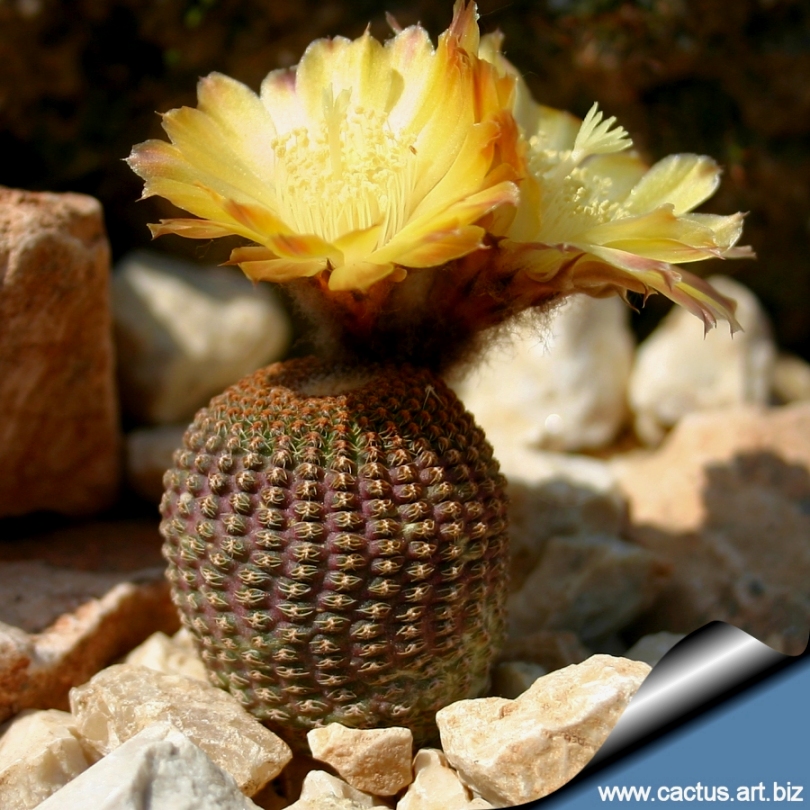
Lobivia famatimensis FR459 Sierra Famatima La Rioja Argentina
|
Description: Lobivia famatimensis
is a variable small species, which shows differences either in stem
shape and size, spines and flowers colours. It is usually solitary or
slowly clumping and slow growing.
Stems: Globular, oval, elongated to cylindrical 1 to 7(-15) cm
tall in height and 2 to 6 cm in diameter. The stem apex is strongly
depressed. The epidermis is grey-green, dull-green, olive-green or
brownish-grey and is often tinged purple in bright light.
Ribs: 24 to 40 low, cross-furrowed and forming about 12-18 small
hemispherical tubercles 0,5-1,5 mm tall and up to 3 mm in diameter.
Areoles: Oblong, brownish.
Spines: No central spine. The 7 to 9(-12) radials are flattened
against the body, curved, more or less pectianted, almost hyaline,
whitish, greyish, yellowish, amber or brownish with dark bases. 1 to
3(-5) mm long.
Root: Big, conical, tap root.
Flowers: Short funnel-shaped, out of woolly greyish-brown buds
near the top of the plant. They are pearly-yellow, yellow orange to
dull-red (but pink or red or even white flowers occur amongst the
varieties) The flower tube is short and very woolly. The flowers are to
3 to 4 cm long, 3 to 5 cm in diameter.
Blooming season: The flowers, not so readily produced as in many
Lobivia species,
appear in early summer, shortlived. (They last about 2 to 3 days)
Seeds: Ovoidal, black up to 1,5 mm in diameter.
Lobivia famatimensis form FR459 (a.k.a. Reicheocactus
pseudoriecheanus) This is one of the most beautiful and
distictive form of this variable specie. The stems are small flattened
to roundish with very short reddish-brown spidery-pectinate spines and
egg-yellow flowers.
|
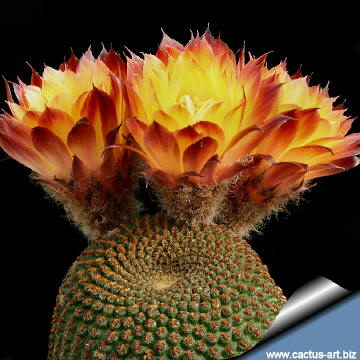
Lobivia famatimensis FR459 |
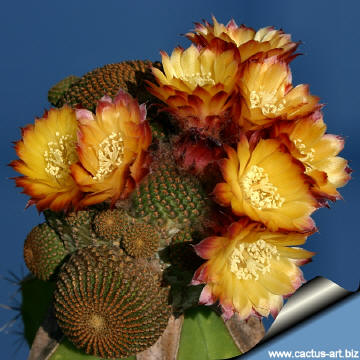
Lobivia famatimensis FR459 |
|
. |
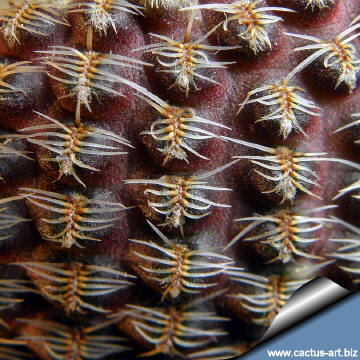
Lobivia famatimensis FR459 (adult specimen) |
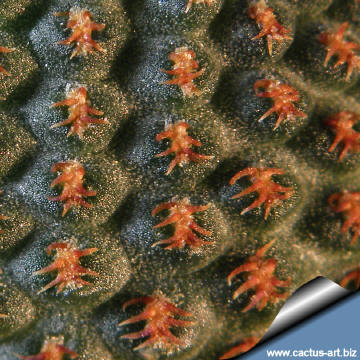
Lobivia famatimensis FR459 (juvenile specimen) |
|
. |
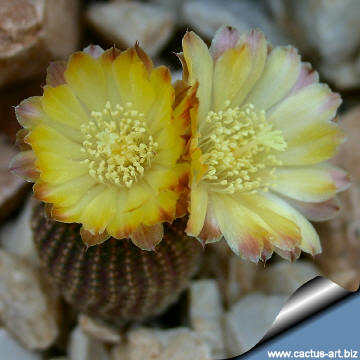
Lobivia famatimensis FR459 |
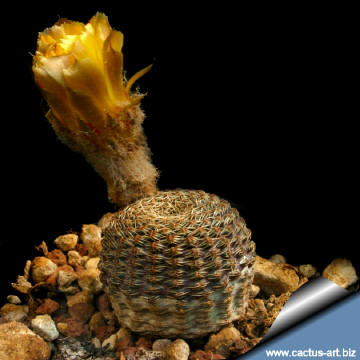
Lobivia famatimensis FR459 |
|
. |
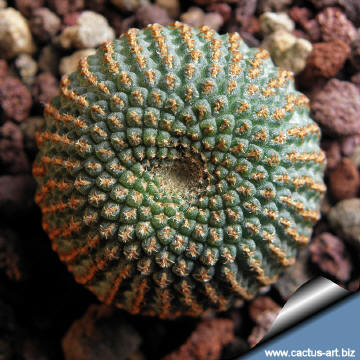
Lobivia famatimensis FR459 |
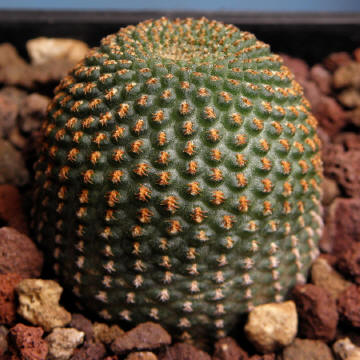
Lobivia famatimensis FR459 |
|
Advertising
|
|
|
|
|
Family:
Cactaceae (Cactus
Family)
Scientific Name:
Lobivia
famatimensis
(Speg.) Britton & Rose 1923
Origin: Native to mountainous Argentina in the Sierras de
Famatina and nearby high mountain of the zone including San Juan. at
elevations of 2500-3000 m ASL.
Conservation status: Listed in
CITES appendix 2.
Synonyms: Reicheocactus pseudoreicheanus
Etymology: The name "famatimensis" comes from the
Sierra Famatina in Argentina from which the species is native.
Synonyms:
- Echinocactus famatimensis Speg.
1921
- Rebutia famatimensis (Speg.) Speg.
ex Hosseus 1926
- Echinopsis famatimensis (Speg.)
Werderm. 1931
Heterotypic synonyms:
- Lobivia pectinifera Wessner ex
Fritzen 1940
- Echinopsis densispina var. pectinifera
(Wessner ex Fritzen) G.Lambert 1998
- Reicheocactus pseudoreicheanus
Backeb. 1942
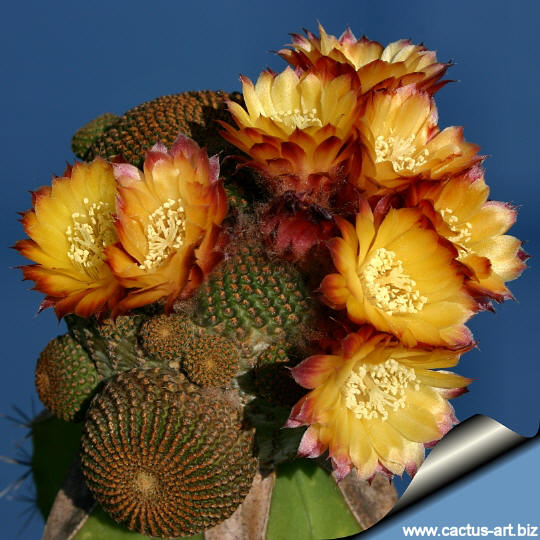
|
|
|
|
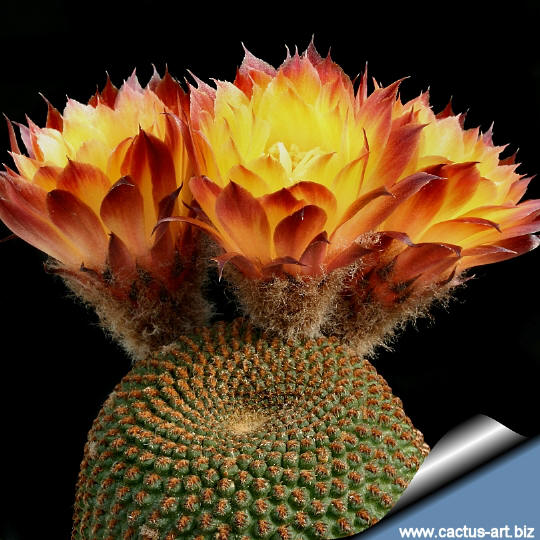
Cultivation:
Very slow growing.
The Lobivia famatimensis have a thick
taproot and are
susceptible
to
over-watering.
Sometimes they are
grafted to avoid
root
rot problems. Suited for
sunny-bright exposure;
they can
tolerate
light shade. They
like warmth (recommended minimum winter temperature 5° C). But plant
kept perfectly dry can easily survive in winter night temperatures below
0° C (In our greenhouse there was no damage at -10° C for a few hours in
the winter of 2002-2003 ) They prefer
airy exposures. Water regularly in summer, but do not
overwater, it prefer a completely dry place during winter. Suited for
sunny-brightly exposure; can
tolerate
light shade.
Pests &
diseases:
L. famatimensis is especially
prone to rot, therefore,
underpot
in a smaller but deep pot filled with a
highly gritty compost and much
drainage, to accommodate its
tap root.
Propagation: Seeds or
graft. Seedlings
of the var. bonnieae grow faster than other Lobivia famatimensis.
Seeds can be sown in the spring or summer. The seedlings
should not be disturbed until they are well rooted, after which
they can be planted separately in small pots.
Photo of conspecific
taxa,
varieties, forms and cultivars of Lobivia (Echinopsis maximiliana):

 |
|